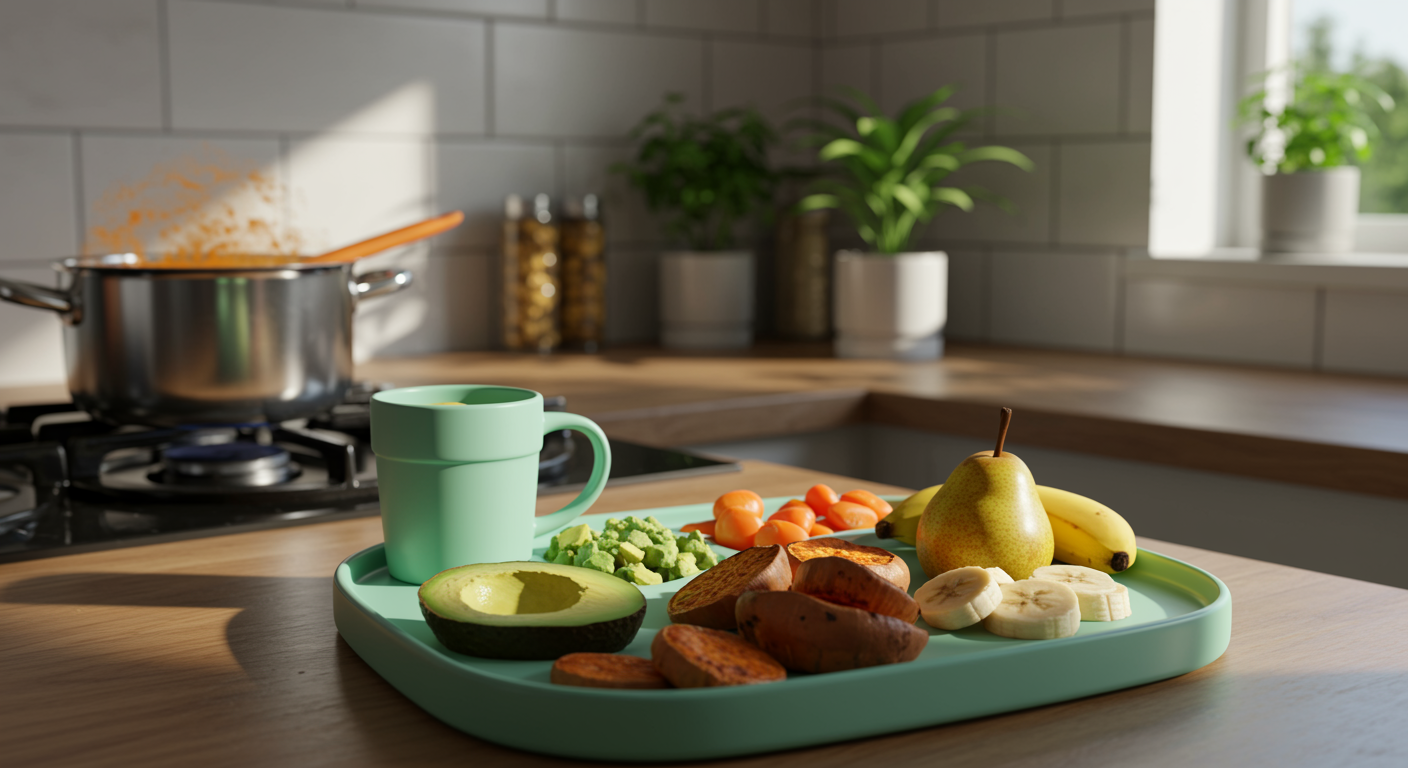Disclaimer: The information and experiences shared in this article are for educational and sharing purposes, and do not replace the advice of a qualified professional. Always consult a pediatrician or specialist for questions related to your baby’s health and well-being.
Introduction
Introducing solids to your baby is an exciting milestone, but it can also feel overwhelming for first-time parents. With so many approaches and opinions, how do you decide what’s best for your little one? Two popular methods—baby-led weaning (BLW) and traditional purees—offer distinct paths to starting solids. This guide will help you understand both approaches, weigh their benefits, and choose the method that aligns with your parenting style and your baby’s needs.
What Is Baby-Led Weaning?
Baby-led weaning (BLW) is an approach where babies self-feed from the start of their solid food journey. Instead of being spoon-fed purees, babies are offered soft, finger-sized pieces of whole foods that they can grasp and eat independently.
Key Features of BLW
- Self-Feeding: Babies control what and how much they eat.
- Family Meals: Babies eat the same foods as the rest of the family (with modifications for safety).
- Focus on Exploration: Encourages sensory exploration of textures, colors, and tastes.
Benefits of BLW
- Promotes Independence: Babies learn to self-regulate their appetite.
- Encourages Motor Skills: Grasping and chewing develop fine motor and oral skills.
- Family Integration: Babies participate in family meals, fostering social interaction.
Challenges of BLW
- Messiness: Expect food on the floor, high chair, and possibly the walls.
- Choking Concerns: Requires careful preparation of foods to minimize choking risks.
- Nutritional Balance: Parents must ensure babies receive adequate nutrients, especially iron.
What Are Purees?
The traditional puree method involves spoon-feeding your baby smooth, blended foods. This approach typically starts with single-ingredient purees before progressing to mixed flavors and thicker textures.
Key Features of Purees
- Parent-Led Feeding: Caregivers control the pace and quantity of feeding.
- Gradual Texture Progression: Starts with smooth purees, advancing to chunkier consistencies.
- Customizable: Purees can be homemade or store-bought, offering flexibility.
Benefits of Purees
- Controlled Introduction: Easier to monitor for food allergies with single-ingredient purees.
- Less Mess: Feeding is generally tidier compared to BLW.
- Nutritional Assurance: Parents can ensure specific nutrients are included in meals.
Challenges of Purees
- Dependency on Spoon-Feeding: Babies may take longer to transition to self-feeding.
- Limited Exploration: Less opportunity for sensory engagement compared to BLW.
- Time-Consuming: Preparing and feeding purees can require more effort.
How to Choose the Right Method
Factors to Consider
- Your Baby’s Readiness: Look for signs such as sitting up unassisted, showing interest in food, and the ability to grasp objects.
- Your Comfort Level: Choose the method that aligns with your confidence and lifestyle.
- Family Dynamics: Consider how the method fits into your family’s routine and mealtime habits.
Combining Both Methods
Many parents find success with a hybrid approach, starting with purees and gradually introducing finger foods. This allows babies to experience the benefits of both methods while easing the transition to self-feeding.
Safety Tips for Starting Solids
General Guidelines
- Wait Until 6 Months: The World Health Organization recommends exclusive breastfeeding or formula feeding until six months of age.
- Supervise at All Times: Always stay with your baby during meals to monitor for choking.
- Introduce One Food at a Time: Wait 3–5 days before introducing a new food to monitor for allergies.
BLW-Specific Tips
- Prepare Safe Foods: Offer soft, easy-to-grasp pieces like steamed vegetables or ripe fruits.
- Avoid Choking Hazards: Skip hard, round, or sticky foods such as whole grapes, nuts, or peanut butter.
Puree-Specific Tips
- Start with Iron-Rich Foods: Include options like fortified cereals, pureed meats, or legumes.
- Gradually Increase Texture: Move from smooth purees to mashed and chunkier textures as your baby grows.
Sample Meal Ideas
Baby-Led Weaning
- Breakfast: Strips of avocado and scrambled eggs.
- Lunch: Steamed broccoli florets and shredded chicken.
- Snack: Slices of ripe banana.
- Dinner: Soft-cooked pasta with a mild tomato sauce.
Purees
- Breakfast: Oatmeal blended with breast milk or formula.
- Lunch: Pureed sweet potato with a dash of cinnamon.
- Snack: Applesauce (unsweetened).
- Dinner: Mashed peas and carrots.
Conclusion
Starting solids is a journey that looks different for every family. Whether you choose baby-led weaning, purees, or a combination of both, the most important thing is to create a positive and stress-free experience for you and your baby. Remember, there’s no one-size-fits-all approach—trust your instincts, follow your baby’s cues, and enjoy this exciting milestone together.
